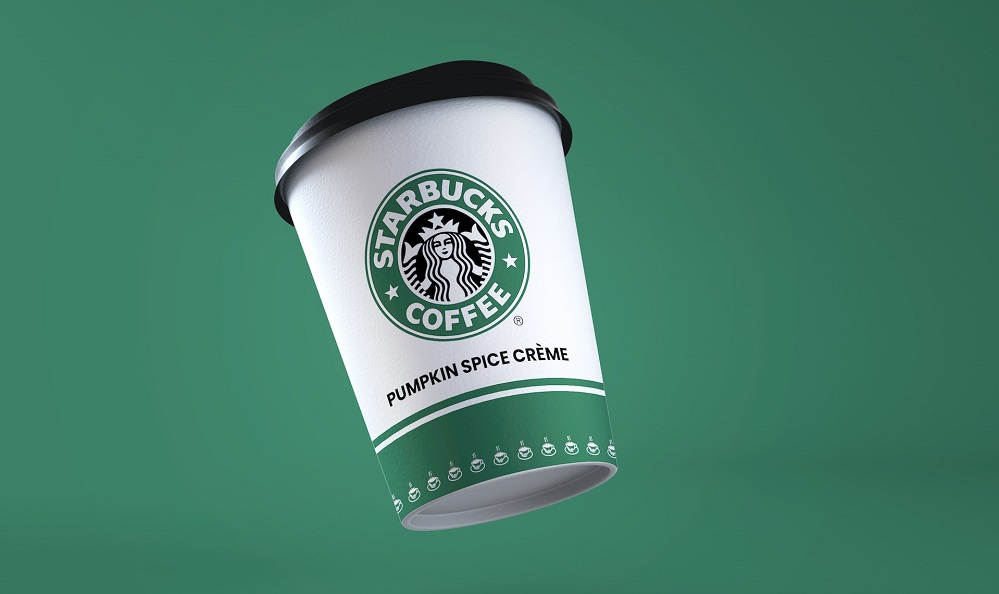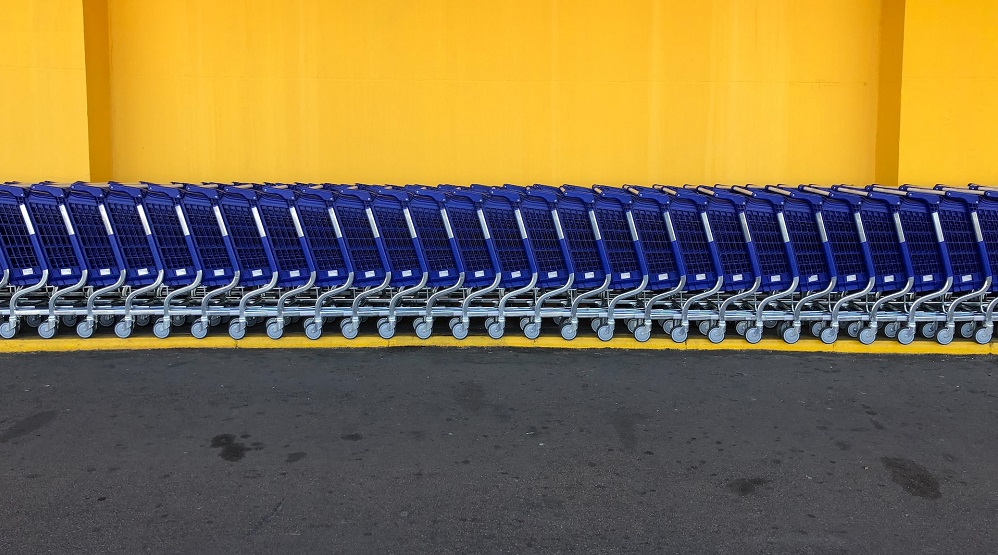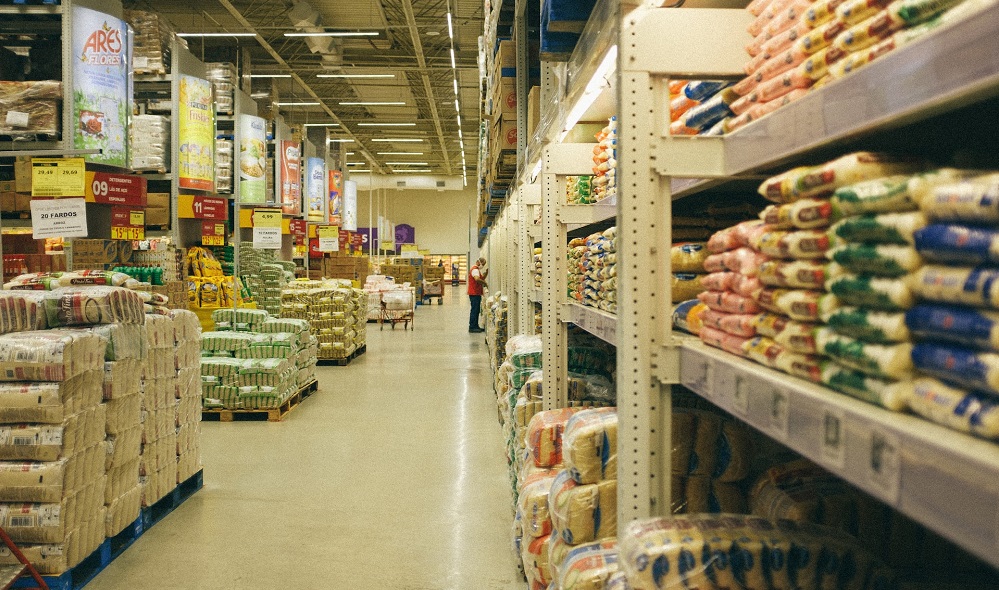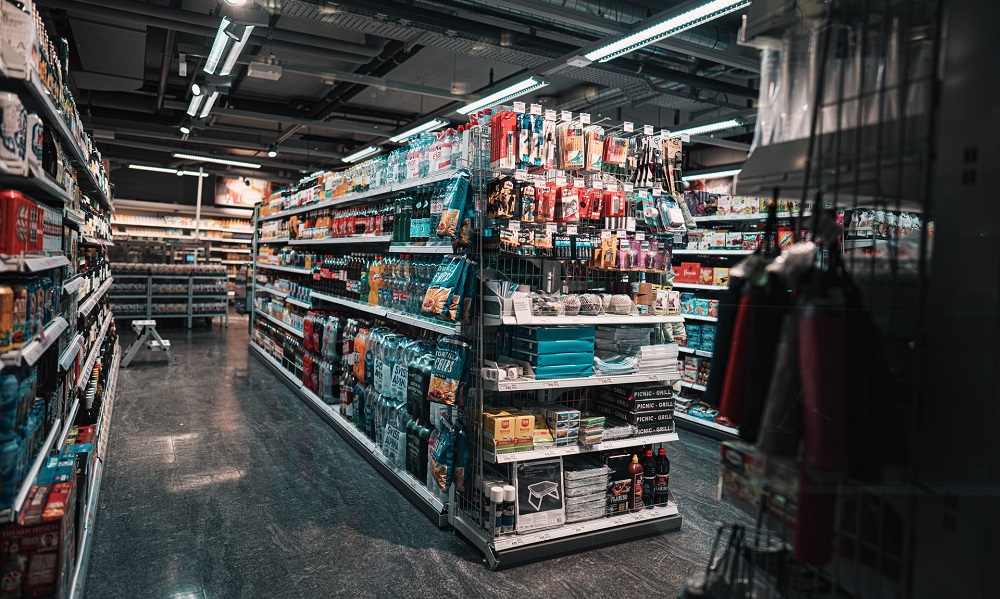A combination of inflation, changing consumer tastes, and inventory challenges have reportedly hit clothing companies hard in 2022. In fact, several fashion retailers—including Abercrombie & Fitch Co. (NYSE: ANF), American Eagle Outfitters (NYSE: AEO), and Urban Outfitters, Inc (NASDAQ: URBN)—missed revenue estimates in their second quarter earnings reports. We analyzed consumer spending trends at these fashion retailers, as well as competitor Aeropostale Inc, to see how sales performance, average monthly spending per customer, and ecommerce trends fared in recent months and compared to before the pandemic.
Following Party City Holdco Inc’s (NYSE: PRTY) FY22 Q2 earnings beat, the company announced its hiring of 20,000 additional workers, anticipating a busy Halloween in 2022. Bloomberg Second Measure’s consumer transaction data shows that Party City Holdco Inc.’s U.S. sales increased year-over-year in October 2021, but are yet to reach pre-pandemic levels. Additionally, we found that the average October sales per customer at Party City Holdco Inc increased during the pandemic.
The return of seasonal offerings like the pumpkin spice latte (or “PSL”)—which launched at Starbucks (NASDAQ: SBUX) this year on August 30—coincided with a noticeable uptick in weekly U.S. sales for the coffee chain. Looking at Starbucks’ sales volume during fall menu launches over the past four years, U.S. weekly sales were also highest during the launch in 2022.
Earlier this year, Chipotle Mexican Grill (NYSE: CMG) reiterated its plan to more than double its retail footprint in the U.S. and Canada, with a special focus on increasing its drive-thru capabilities. During the pandemic, the fast casual chain experienced strong growth in its online sales—which are still elevated in 2022—as well as gradual recovery for its in-store sales after an initial dip in March 2020. Consumer transaction data also shows that Chipotle has the highest month-over-month customer retention rate among its fast casual competitors Moe’s Southwest Grill and Qdoba Mexican Eats.
Big-box stores Target Corporation (NYSE: TGT) and Walmart Inc (NYSE: WMT)—which both recently reported their quarterly earnings—have faced excess inventory challenges over the last few months, slashing prices even as inflation has soared to new heights. Our credit and debit card transaction data reveals that in 2022, monthly average transaction values have generally increased year-over-year at Walmart Inc, but decreased slightly at Target. Additionally, our analysis shows that the share of online sales at both retailers is still elevated compared to pre-pandemic levels.
In July 2022, the grocery industry reportedly experienced the biggest year-over-year price hikes since the 1970s, affected by factors such as inflation and ongoing supply chain issues. So how has consumer spending at specific supermarket chains fared against this backdrop? Using consumer transaction data, we analyzed how U.S. consumer spending at major grocery store companies—including Ahold Delhaize; Albertsons Companies, Inc (NYSE: ACI); Aldi; H-E-B; The Kroger Company (NYSE: KR); Publix; and Trader Joe’s—changed between July 2021 and July 2022.
As inflation continues to rise, many consumers are reportedly turning to discount stores for household essentials. Our competitive analysis of major discount retailers—including Five Below (NASDAQ: FIVE), Dollar General (NYSE: DG), Dollar Tree, Inc (NASDAQ: DLTR), and 99 Cents Only Stores—found that Five Below had the highest average transaction value, but Dollar General had the highest quarterly transactions per customer and quarter-over-quarter customer retention in the second quarter of 2022.
Gap Inc (NYSE: GPS) recently saw its CEO step down amidst weakening sales and supply chain issues. However, our consumer transaction data shows that while some brands within Gap Inc’s portfolio—Old Navy and its namesake brand Gap—saw their U.S. sales decline year-over-year in Q2 2022, other brands like Athleta, Banana Republic, and Banana Republic Factory experienced positive growth. Our analysis shows that in addition to year-over-year sales growth, these three brands experienced increases in average quarterly sales per customer compared to before the pandemic.
With summer blockbusters attracting moviegoers back to the box office, consumer transaction data reveals that U.S. sales for AMC Entertainment Holdings (NYSE: AMC) in June 2022 tripled compared to the same month last year. Our analysis further shows that the movie theater chain’s sales and average monthly sales per customer are higher than they were prior to the pandemic.
In the wake of an earnings miss in its most recent fiscal quarter, Bed Bath & Beyond Inc (NASDAQ: BBBY) recently announced leadership changes and is reportedly considering a sale of its Buybuy Baby subsidiary. Consumer transaction data reveals that for BBBY’s namesake retail chain Bed Bath & Beyond, sales in June 2022 were about half of what they were three years ago. In addition, an analysis of sales by purchase channel found that in-store shopping continues to dominate Bed Bath & Beyond’s sales, but ecommerce customers have a higher average monthly spend at the home goods retailer.
Instant delivery companies proliferated early in the pandemic, especially in urban markets like New York City and Boston. But for many of these companies, their life cycle has also been ultrafast. In recent months, instant delivery competitors including Jokr, Buyk, and Fridge No More have permanently shut down or ceased operations in the U.S. However, one of the more established rapid delivery companies, Gopuff, is continuing to expand into new domestic and international markets.
After months of pressure from activist hedge funds, national department store chain Kohl’s Corporation (NYSE: KSS) announced in May 2022 that it was exploring a potential buyout. The announcement came amid a shifting retail industry in which several big-box retailers like Walmart and Target reported disappointing first quarter results, while some department store companies such as Macy’s Inc (NYSE: M) and Nordstrom Inc (NYSE: JWN) posted strong first quarter earnings and raised their profit outlook.
When U.S. cities and states faced shelter-in-place orders to limit the spread of the coronavirus, Americans’ reduced mobility resulted in plummeting sales at rideshare companies. With the exception of year-end dips in 2020 and 2021, sales have been gradually recovering since April 2020. Bloomberg Second Measure transaction data shows that Uber sales were up 49 percent year-over-year and Lyft sales were up 29 percent year-over-year in May 2022.
When many Americans sheltered in their homes early in the coronavirus pandemic, meal delivery sales reached new heights. Our data reveals that in May 2022, sales for meal delivery services grew 8 percent year-over-year, collectively. These thriving businesses have been in the spotlight during the COVID-19 era. DoorDash (NYSE: DASH) made its public market debut with one of the biggest IPOs of 2020, while Uber (NYSE: UBER) acquired Postmates at the end of November 2020 in an attempt to consolidate market share and boost profitability.
National discount retail chain Big Lots (NYSE: BIG) reported an earnings miss in its most recent fiscal quarter, joining other major retailers like Walmart (NYSE: WMT) and Target (NYSE: TGT), whose company performance and earnings have also been hit hard by rising labor costs and supply chain issues. Consumer transaction data shows that both customer counts and sales at Big Lots declined year-over-year from January through April of 2022, but average transaction values were higher than pre-pandemic levels.
Summer vacation is around the corner, and consumer demand for travel has picked up again. Chip shortages have driven up the price of new and used cars, while gas prices have reached historic levels and contributed to soaring airfares. The rental car and car sharing industry has also typically seen higher sales in the summer months, and the shortages that plagued last year’s summer travel are expected to continue this year. As we enter the new summer season, consumer transaction data shows that among major car rental and car sharing services, Turo—which filed for an IPO earlier this year—has seen the most growth in sales and customer counts over the past three years.
Shortly before announcing its first quarter earnings results, DTC home furnishing company Wayfair Inc (NYSE: W) launched its fifth annual Way Day sales event. Bucking its trend of increasing sales every year, consumer transaction data shows that Wayfair sales during Way Day week in 2022 were lower compared to Way Day week sales during the previous two years. However, zooming out, average transaction values at Wayfair Inc have been on the rise in 2022.
When many Americans sheltered in their homes early in the coronavirus pandemic, meal delivery sales reached new heights. Our data reveals that in April 2022, sales for meal delivery services grew 7 percent year-over-year, collectively. The ongoing pandemic may also be driving more Americans to make their first meal delivery purchase. In April 2022, 52 percent of U.S. consumers had ever ordered from one of the meal delivery services in our analysis, up from 47 percent a year ago.
When U.S. cities and states faced shelter-in-place orders to limit the spread of the coronavirus, Americans’ reduced mobility resulted in plummeting sales at rideshare companies. With the exception of year-end dips in 2020 and 2021, sales have been gradually recovering since April 2020. Bloomberg Second Measure transaction data shows that Uber sales were up 80 percent year-over-year and Lyft sales were up 49 percent year-over-year in April 2022.
In April 2022, Chinese ecommerce giant Shein closed a funding round that valued the company at $100 billion. Shein has experienced a meteoric rise in the U.S. fast fashion market, with its sales overtaking established competitors such as H&M and Zara during the COVID-19 pandemic. Using U.S. consumer spending data, we analyzed how Shein sales have boomed over the past few years, as well as how other fast fashion companies have fared.






















